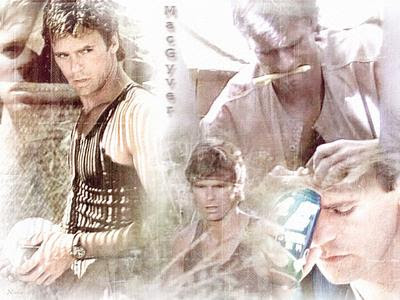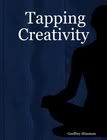 Today's post is a short one, but one that should pay off over and over again. It's about mistakes. We all make them, especially typos. Oh, the typos!
Today's post is a short one, but one that should pay off over and over again. It's about mistakes. We all make them, especially typos. Oh, the typos!
One of the most difficult disciplines for a writer to master is to turn off the internal editor until a draft is written. If we start to edit before we finish writing, it makes the whole process last so much longer. Why, oh why, then, do we leave that spell check on while we write? It's a constant reminder that we have made a mistake.
But so what?
Of course I make mistakes. If I'm going to wait to until a draft is done before I go back and fix it up, however, then why would I want to stop my creative flow to fix the typos while I am writing. I think this constant fixing of typos really breaks the creative flow. For the next week, I challenge you to turn off your spelling and grammar check while you are writing. Or you could use a basic text editor such as Notepad or Textpad. See if it makes a difference in your ability to get ideas on the page.
Saturday, March 22, 2008
Clearly I'm Mistaken
Thursday, March 13, 2008
The MacGyver Guide to Creativity

If you are old enough to remember MacGyver, the first thing that comes to mind is his amazing ability to fashion new devices from just about anything. (Okay, maybe the amazing hair is the first thing that comes to mind, but that device thing is a very close second.) It's this ability that made the character of MacGyver a television legend.
At the core of every conflict was MacGyver's ability to use his creativity to solve a problem. Really, the guy could make a detonation device from a shoelace, some nail polish, and a can of green beans. One of the points I talk about a lot on this blog being able see everyday objects in a new way. MacGyver had an innate ability to see those everyday objects and create new relationships between with them.
What Would MacGyver Do?
As writers, relationships are the foundation upon which everything we write is build. Because characters exist in real world scenarios, the potential for the unexpected relationship exists in every environment in which a story is taking place.
If you were given seemingly unrelated items, could you fashion a coherent narrative from them? For instance, what would you do with a firefighter, a case of candy canes, and an impending tornado? Could you create a story from these three elements? I bet you could. And what's more is that the story I create from those three elements would be very different from the story that Kimberly might. And those would both be very different from the one that Kathryn would create.
This is the difference that is established by the inner creativity we bring to each relationships. Going beyond our normal patterns of perception and looking for relationships in everything is the first step in tapping creativity. And it doesn't matter if you are a writer, musician, painter, interior decorator, or programmer. It's when you find new meaning in relationships that your creativity flourishes.
Next time you find yourself in a creative rut, ask yourself: What Would MacGyver Do?
Saturday, March 8, 2008
Co-Creating :: The Power of Two
In my last post, I presented an eBook that dealt with ways to stay focused when writing, because writing is, for the most part, a solitary endeavor. In this post, we are going to look at the power of tapping creativity with others.
One item I touch upon regularly is that much of creativity comes from changing your perspective. If you can see everyday objects in a new way, you can them present them in a way that is more consistent with your unique artistic vision. Sometimes this means finding new details in relationships between different objects, people, opinions, perceptions, or any combination of those. And sometimes, it’s just about looking at a solitary object from a different frame of reference.
The Power of Two
When you co-create with someone, the ability to change your frame of reference and find something unique in relationship is magnified tremendously. Indeed, having another person creating with you means working with a frame of reference that is naturally different from your own. You don’t need to try looking at something differently; your co-creator is doing that.
What develops, then, is two people with different perspectives and views trying to bring them together. Nearly always, the end results of distinctly different than what either could have accomplished as individuals. If you have ever worked at an ad agency, the dynamics between a copywriter and art designer are essential in creating something special and new. It magnifies the creativity.
Take The Beatles, for example. John and Paul were arguably the greatest songwriting team in the history of rock music. Post-Beatles, however, their solo efforts sounded distinctly different from The Beatles. While both were able to go on to successful solo careers, I would argue that John, without Paul’s songwriting sensibilities, was given to sentimentalism. And Paul, without with John’s primal passion, was much more predictable.
It’s the magic in co-creating that makes some works of art timeless.
Beyond Creating
When my grandmother recently passed, I took some time to really reflect on our relationship and why she was so important to me. Beyond her incredible character, my grandmother is the one who sewed the seeds of creativity in me. She was not a writer or a musician. I don’t think “artistic” is a word that was ever used to describe her. What she knew how to do, though, was build relationships.
She would take me to the store and we would get paint-by-number sets and do them together. When I was learning guitar, she would ask me to learn songs she liked. She never made cookies for me, she asked me to help her make cookies. It was the nurturing of relationship and the ability to work together to achieve something new that showed me, beginning at a very young age, how rewarding it was to create…and how special it can be to create something new with someone else.
When you are creative, you likely have creative friends. Call one tonight and pitch an idea. Perhaps you have a photographer friend who has images that will inspire your writing. Perhaps the two of you can go to new location, while one writes and the other snaps pictures; then bring the two together and see how it works. Then figure out how you can make it work even better.
Or you can simply call a friend to come over and bake cookies with you. I bet they’ll taste better that way.
Posted by Geoff at 2:22 PM 2 comments
Labels: building relationships, co-creating, tagging creativity


